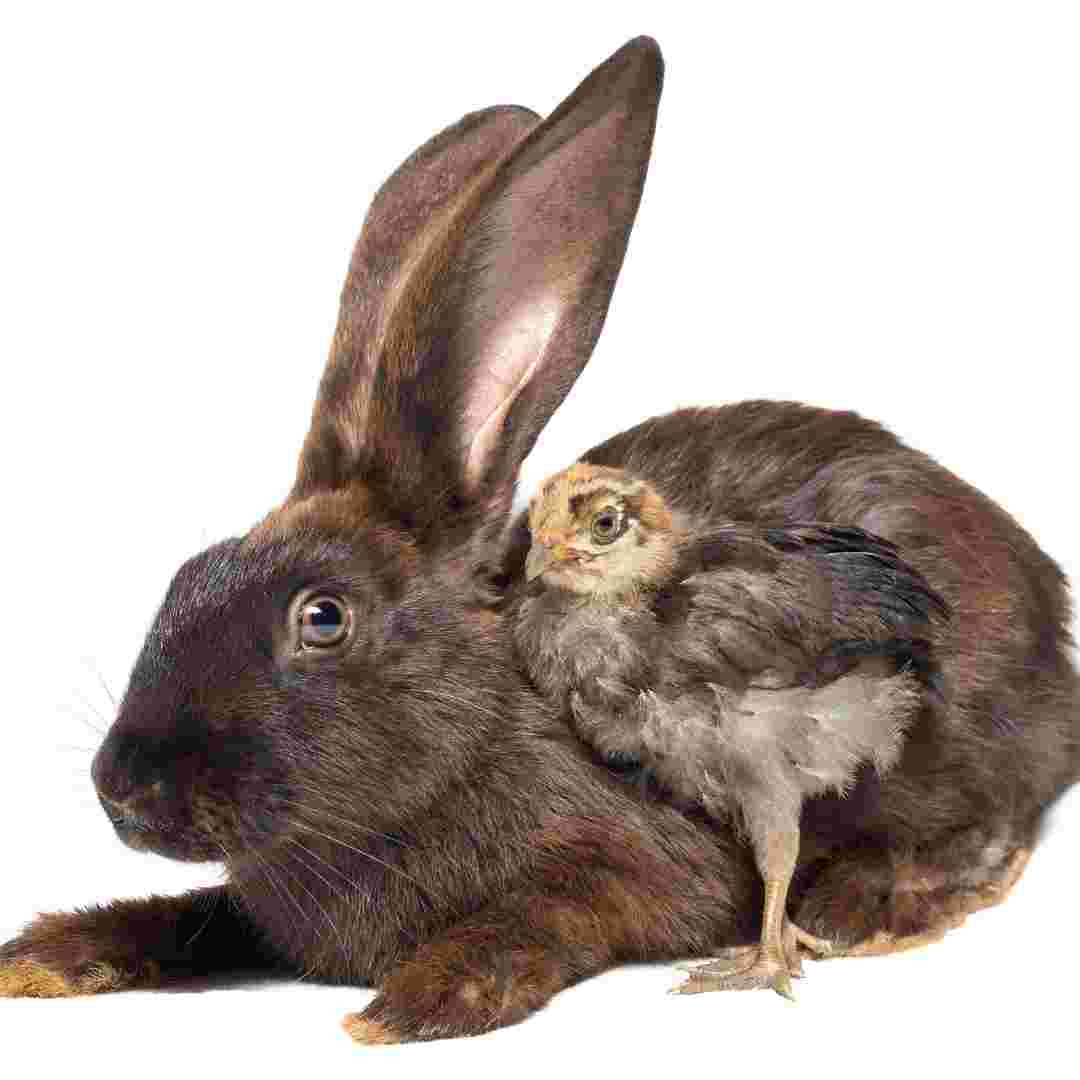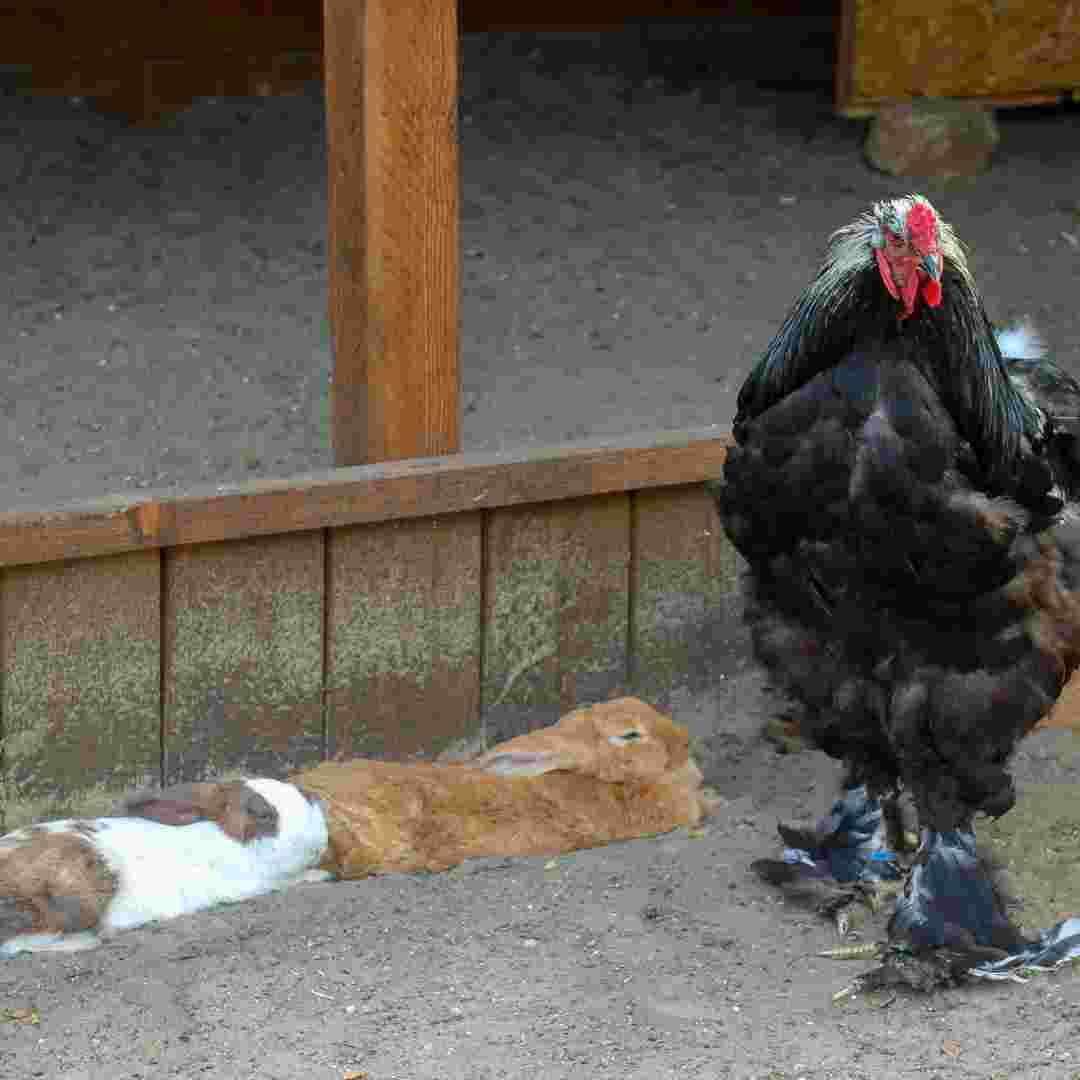Contents Table
Introduction
Rabbit Meat Advantages Over Chicken
How to Cook Rabbit for Maximum Flavour
Meat-producing rabbit breeds that excel
Raising Rabbits for Meat and Fur
Rabbit vs. Chicken Farming: Pros and Cons
Q&A
Conclusion
Introduction
Rabbits are becoming a popular protein alternative to chicken. Lean, low-fat, high-protein, low-cholesterol meat. Rabbits breed swiftly and require few resources, making them a sustainable meat supply. From stews to stir-fries, rabbit meat is adaptable. Iron, zinc, and B vitamins are abundant in rabbit flesh. Rabbit meat is a healthy and tasty alternative to chicken due to its mild flavour and soft texture.
Rabbit Meat Advantages Over Chicken
Due to its health and sustainability benefits, rabbit meat is becoming a popular chicken alternative. Lean rabbit meat has less fat and calories than chicken. Its higher protein content provides energy and builds and maintains muscular mass. Rabbit flesh contains iron, zinc, and B vitamins.
Rabbit meat has nutritional value and is more sustainable than chicken. Rabbits are smaller than chickens and require less space and resources. Reproducing swiftly makes them a more efficient meat supply. Rabbit meat is also more compassionate than chicken because rabbits are not overcrowded and inhumanely raised in factory farms.
Finally, rabbit meat is more versatile than chicken. Cook it by roasting, grilling, or stewing. Rabbit meat tastes milder than chicken, making it a good choice for chicken haters.
Rabbit meat is healthier and more sustainable than chicken by many factors. It is leaner, higher in protein, more compassionate, and more versatile and tasty than chicken. This makes rabbit meat a great choice for individuals seeking a healthier, more sustainable protein source.
How to Cook Rabbit for Maximum Flavour
Lean and tasty rabbit can be cooked in many ways. Choose the best cooking method and prepare the rabbit properly to maximise flavour.
Choose a plump, firm rabbit. Avoid slimy or smelly ones. You must properly prepare your rabbit after choosing it. First, remove the head, feet, and entrails. Cut the rabbit into pieces, discarding fat and sinew.
There are various ways to prepare rabbit for optimal flavour. Roasting keeps meat moist and tender, making it popular. Season rabbit with salt and pepper and roast at 350°F. Put the rabbit in a roasting pan with a few teaspoons of butter or oil. Roast till 165°F, about 45 minutes.
Braising rabbit is another fantastic method. Cooking beef in stock or wine at a low temperature for a long time is this approach. This tenderises and flavours meat. Salt and pepper rabbit pieces and sear them in a skillet with oil to braise. Add the liquid and boil for an hour to tenderise the meat.
Finally, grill or barbecue rabbit. Sprinkle salt and pepper on the pieces and oil them. Cook till 165°F in 10 minutes on a medium-high grill or barbecue.
Seasoning and cooking the rabbit at the right temperature maximises flavour regardless of the method. A tasty rabbit dish can be made with proper preparation and cooking.
Meat-producing rabbit breeds that excel
Rabbits' quick growth and feed conversion make them attractive meat producers. When choosing a rabbit breed for meat production, consider its size, meat output, and care. Here are some of the greatest meat rabbit breeds:
1. Californian: This huge rabbit breed produces a lot of meat. White rabbits with black markings have short, thick coats. The Californian rabbit is resilient, easy to care for, and can produce 8 pounds of meat per rabbit.
2. New Zealand: This huge rabbit breed produces a lot of meat and grows quickly. The white rabbit has red eyes and a short, thick coat. New Zealand rabbits are resilient, easy to care for, and may produce 10 pounds of meat per rabbit.
3. Flemish Giant: This giant rabbit breed produces a lot of meat and grows quickly. Red eyes and a long, dense coat characterise this white rabbit. Flemish Giants are hardy, easy to care for, and may generate 12 pounds of meat per rabbit.
4. Silver Fox: This huge rabbit breed produces a lot of meat and grows quickly. White rabbits with black markings have short, thick coats. Silver Foxes are sturdy, easy to care for, and may generate 10 pounds of meat per rabbit.
5. Champagne d'Argent: This huge rabbit breed produces a lot of meat and grows quickly. White rabbits with black markings have short, thick coats. Champagne d'Argent rabbits are sturdy, easy to care for, and may produce 8 pounds of meat per rabbit.
To maximise their potential, rabbits need a good diet and sufficient care, regardless of breed. Right breed and care can provide a regular supply of tasty rabbit meat.
Raising Rabbits for Meat and Fur
Rabbit farming for meat and fur is rewarding. Before starting, learn rabbit care and husbandry. This article describes how to grow rabbits for meat and fur.
Selecting the proper rabbit breed is crucial. Breeds have traits that make them excellent for meat or fur. Research the breeds and choose the finest one for you.
After choosing the breed, buy supplies. This contains cages, feeders, water bottles, and bedding. The cages must be large enough for the rabbits to walk and exercise.
Next, feed the rabbits well. Various fresh veggies, hay, and pellets are needed. Rabbits need a balanced diet to stay healthy and productive.
Finally, rabbits need proper care and husbandry. Regular cage cleaning, fresh water and food, and exercise are required. Rabbits should also be monitored for disease or injury.
These steps will help you raise rabbits for meat and fur. Proper care and husbandry can keep rabbits healthy and productive.
Rabbit vs. Chicken Farming: Pros and Cons
Rabbit and chicken farms are popular. Before choosing a farming method, analyse its pros and downsides.
Pros of Rabbit Farming
Rabbit farming has advantages over chicken rearing. Smaller rabbits need less space and feed than chickens. They may produce 12 kits per litter and reproduce swiftly, gestating 28–31 days. Rabbits are calm and rarely annoy neighbours. Finally, rabbits provide meat and fur that can be sold.
Rabbit farming cons
Rabbit farming also has drawbacks. Rabbits need more vet visits and are more disease-prone than chickens. Specialised housing and equipment are very costly. Rabbits are harder to nurture than chickens and require more patience.
Pros of Chicken Farming
Chicken farming offers advantages over rabbit rearing. Chickens are bigger than rabbits and need more space and food. They may produce up to 8 chicks each clutch and reproduce slowly, gestating 21 days. Chickens also make noise, which draws attention. Finally, chickens produce eggs and meat and can be sold.
Cons of Chicken Farming
Chicken farming also has drawbacks. Chickens are preyed upon more than rabbits and need better housing and fence. They also need expensive, specialised equipment. Finally, chickens require more time and skill than rabbits to rear.
In conclusion, rabbit and chicken husbandry have pros and cons. These should be carefully considered before choosing a farming style.

Q&A
1. What are rabbit's nutritional advantages over chicken?
Lean rabbit has fewer calories and fat than chicken. It has more protein, iron, and B vitamins than chicken.
2. How does rabbit taste versus chicken?
Rabbit tastes gentler and sweeter than chicken. More tender and juicy.
3. Can rabbit replace chicken in recipes?
Rabbit may replace chicken in many recipes. Since rabbit cooking times and temperatures vary, use a rabbit-specific recipe.
4. Are rabbits more expensive than chickens?
In general, rabbit costs more than chicken.
5. Can rabbit be eaten?
Rabbit is safe to eat if cooked properly. It should be boiled to 165°F to destroy bacteria and parasites.
Conclusion
For leaner, healthier meat, rabbit is a good alternative to chicken. Healthy diets benefit from rabbit's high protein and low fat content. Rabbit has critical vitamins and minerals, making it a healthy dinner choice. Its mild flavour and adaptability make rabbit an excellent addition to any dish.
